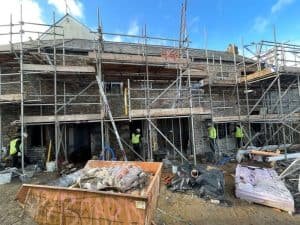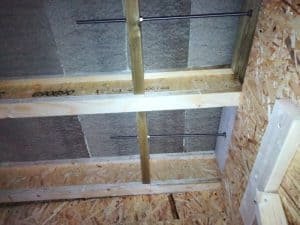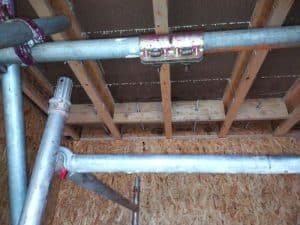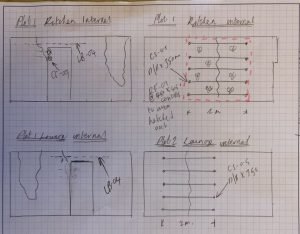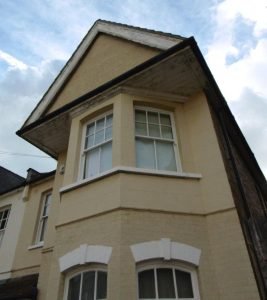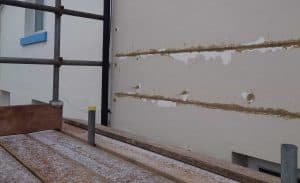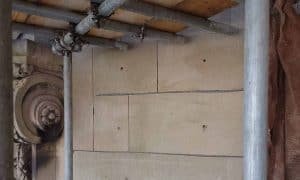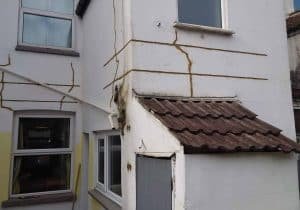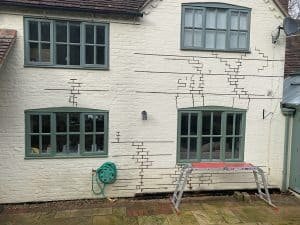Lateral Restraint and Delimitation Issues in Stone Built Property

The Problem
As part of the development of several new build properties, a main contractor was tasked with converting an existing, stone-built, period property. During the works, they discovered that there was a delamination issue, where the outer leaf of stone masonry was moving away from the inner leaf. They also noticed significant cracking.
Due to the specialist nature of the repairs required, the contractor contacted us.
Following a site survey, our engineer designed a repair specification comprising of lateral restraint, bed-joint reinforcement, and crack stitching.
The Solution
Lateral Restraint
The lateral restraint was carried out using a combination of Bow Ties and CemTies. For areas where the outer masonry could be reconnected to the inner structure via timber joists, lateral restraint tie bars, known as Bow Ties, are used. These steel ties are inserted at pre-determined intervals as per the manufacturer’s method statement. A clearance hole is drilled through the outer masonry, and the bow tie is then inserted through it. The tie is then hammer-drilled and self-taps into the timber joists. The hole is then filled with a polyester resin to anchor it to the outer skin preventing further outward movement.
For areas where the external and internal skin are both constructed of masonry, Cem Ties are used. These are long stainless steel, helical wall ties that are inserted into a pre-drilled clearance hole that passes though both skins to a pre-determined depth. The tie is inserted along with a thixotropic, cementitious grout which bonds with both the tie and the surrounding masonry.
Bed Joint Reinforcement
For the bed joint reinforcement, twin bands of long, stainless-steel helical bar and installed laterally into raked out bed joints of the masonry. The twin bands of helibar are inserted into the joints and encapsulated with thixotropic, cementitious grout. This reinforcement redistributes the structural loads over a wider area.
Crack Stitching
To reconnect the masonry either side of the cracks in the walls, short, one metre lengths of helical bar are positioned horizontally to stitch the cracks. Again, these are encapsulated with thixotropic grout, which is also injected into the cracks.
Project Completion
All areas of disturbed mortar were made good.
The cost-effective solution was completed on time and within budget.
The Problem As part of the development of several new build properties, a main contractor was tasked with converting an existing, stone-built, period property. During the works, they discovered that there was a delamination issue, where the outer leaf of stone masonry was moving away from the inner leaf. They also noticed significant cracking. Due […]
